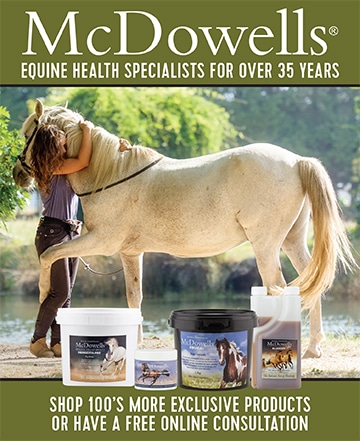Finding extra marks in a dressage test is something we all strive to do. A useful way to go about this is to pick a few key things that show up in every test and work on nailing these components. One thing that shows up in every level is the halt.
The first way to improve your horse’s square halt is to focus on it every single time you ride one – not just when you’re practicing a dressage test. That means you need to be aiming to do a ‘proper’ halt every time you stop to have a break, stop to talk to somebody, stop to get off and pick up a pole and, very importantly, as the last moment of every single ride. By giving it consistent attention, you teach your horse exactly what is expected when you ask it to stop, so it becomes habitual. If you always expect a square halt, you are more likely to get one.

Once you’re giving the halt attention and focusing on it every ride, here are seven tips on how to make it better.
- Initially, practice halts alongside the arena wall to help keep the horse straight.
- The horse needs to be willingly working forwards and through his back, and moving straight through a ‘tunnel’ made of the rider’s hands and legs.
- The preparation for halts should come from a series of half-halts (smaller aids using hand and seat, alerting the horse that something is about it happen, ie a new transition is coming).
- The rider must enter the halt balanced and tall, not leaning forward or back, or collapsing to one side or the other (this is often the case if your horse swings the hindquarters out to one side in halt).
- To ask for a full halt: breathe in, sit up tall and, as you breathe out, sit down and back slightly, closing the hands on the reins and wrapping the horse’s body with your legs until the completion of the halt; hand and leg pressure coming off when the halt is complete. Prompt timing is everything!
- Glance down at the shoulders and learn to recognise what it looks like when the horse is square in front. If you need to adjust, step the horse forward, never backwards, into the halt.
- If, once halted, you notice one hind leg is left out behind, step it forward into the halt too (a dressage whip behind the rider’s relevant leg may be useful).
Remember, practice and complete good halts every ride and do them from a balanced, well set-up walk or trot. Consistency is the key.


